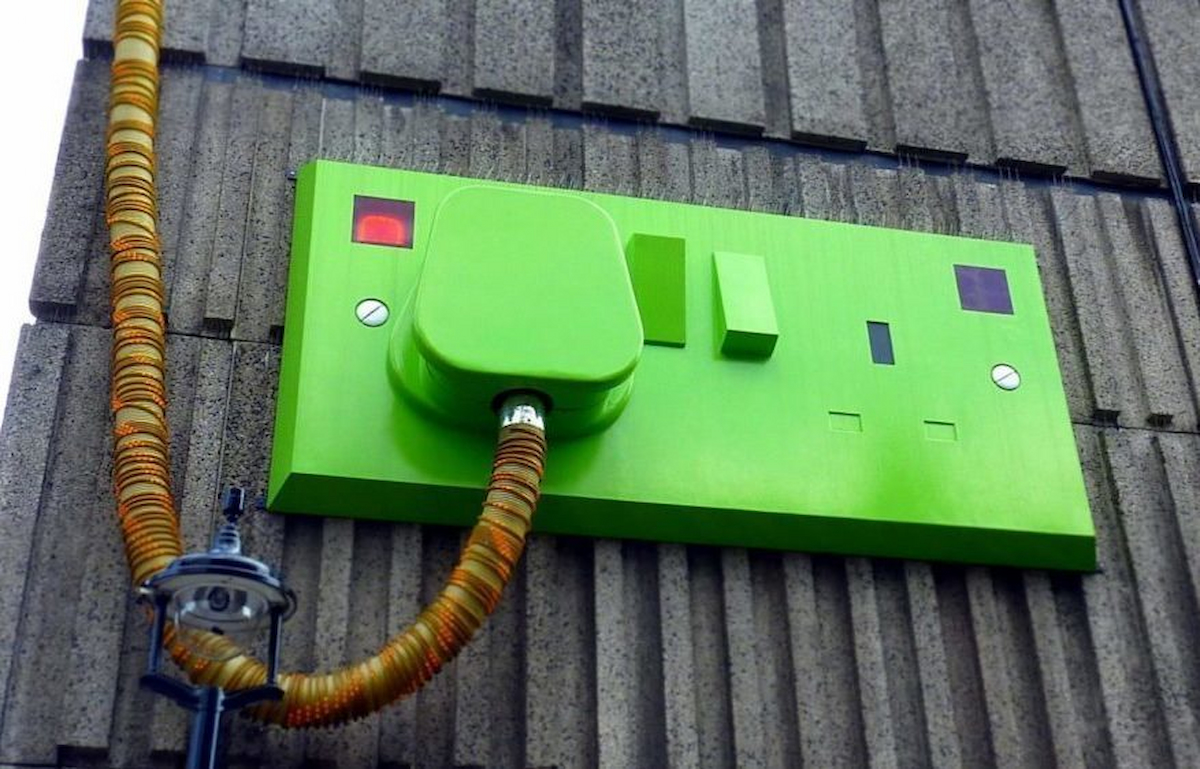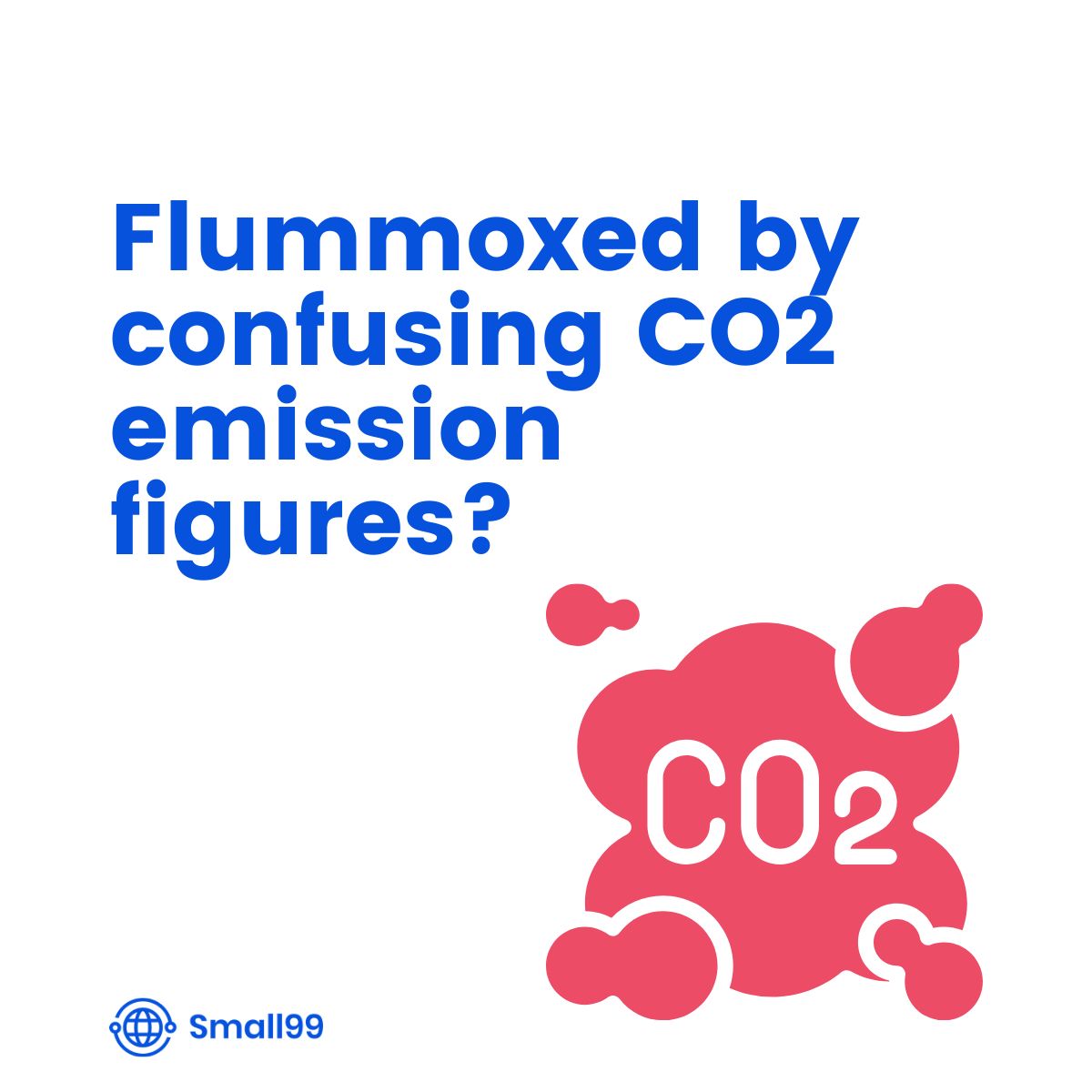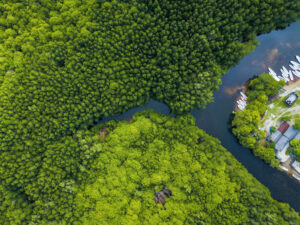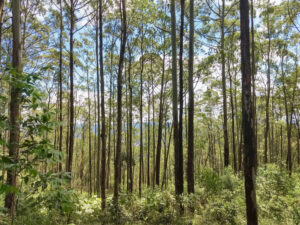More and more businesses are offering tree planting initiatives as a way to offset their carbon emissions. Customers can rest assured they’re helping offset the negative impacts of their purchases. Business owners feel good about reducing their emissions and are one step closer to net zero.
Win-win, right?
Not quite.
In this post, we’ll explore the challenges tree planting schemes face, whether they really make a difference or if they’re a well-intentioned form of greenwashing.
As a business owner, there are three questions you should be asking:
- Why are you doing it? – Are you doing it because it is easy, or does it form a temporary part of your environmental strategy?
- Assumptions – What are the assumptions that limit the impacts of the projects?
- Additionality – Is it making a real impact?
What is Tree Planting?
Tree planting initiatives are the most common form of carbon offsetting. The idea is that by paying someone else to plant a tree, it can capture the carbon as it grows and reverse some of the impacts your company has had on the environment.
You are essentially paying someone else to try and remove the carbon you have emitted. This can also be called Carbon Trading – though these schemes can be far more complex.
The Limitations of Tree Planting
Tree planting schemes are a tool, and like any tool, they can be abused. There are three core areas to consider:
Accountability – Does it actually make a difference?
There are two key terms here:
- Accountability – Are the projects you’re funding actually going ahead, and can you prove that new trees exist?
- Additionality – Has the task resulted in an additional amount of action. I.e. did your actions cause more trees to be planted than would have otherwise?
If you’re funding trees to be planted in another country, how do you know this is really happening? Some schemes (such as Ecologi) deliver on transparency and demonstrate the efforts they have made to solve this problem. Others are less clear on this.
When choosing a scheme, look for transparent messaging on how they account for the trees being planted. Good companies will use internationally recognised schemes such as the Gold Standard.
Accountability is key and any tree planting scheme you use should clearly demonstrate how your money has created additional demand.
Assumptions of Tree Growth
There are several assumptions that these schemes work on:
- The Trees Survive – You plant a tree with the assumption that during its life it will offset an amount of CO2, usually around 1 tonne. What if the tree dies after 6 months?
- That the carbon is taken out now – These CO2 calculations are usually based on a mature tree, and the amount of CO2 removed changes every year. Your company is emitting CO2 right now – and it may take decades for the tree to grow to an effective size.
- Trees are actually planted – What proof do you have that trees being planted are a direct result of your actions and that the project wasn’t already funded?
- That we have unlimited land – What do we do if other countries run out of potential land for offsetting?
Responsibility – Where are you sending your emissions?
Many of the international tree-planting schemes are attractive due to the low cost. What the Woodland Trust (UK) can do with a suggested donation of £25 for 1 tonne of CO2, Ecologi (international), can achieve with just £5.
The problem here is that there is only so much land in the world. If all of the companies in the UK export their emissions to Senegal, where does Senegal offset their emissions?
Eventually, every country needs to be responsible and accountable for its own emissions. Offsetting abroad can only be a short-term solution.
If you do invest in offsetting, try to ensure you are partnering with a UK-based tree planting scheme. It is more expensive but gives you more accountability.
And therein lies the problem with your business putting in place an offsetting scheme so quickly.
It feels great, it’s cheap, and is a simple transaction to grasp in an otherwise confusing net zero world. However, it may have less impact than you think.
Plenty of corporations are signed up to these promises of planting X trees by Y – but we won’t know if trees fully grow as expected until 5, 10, 15 years down the line.
And what if they don’t?
Why you won’t meet Net Zero With Trees
Faulty Assumptions
Tree planting relies on them being successful in the future to meet their promised CO2 reduction targets for emissions made today.
You have no control over the project’s success, and multiple things could stop the trees from reaching maturity without you ever realising, effectively making your offset non-existent. The carbon you emitted guilt-free actually did more damage than you anticipated.
Floods, disease, deforestation, forest fires and administrative errors could all mean the offset potential of your investment is never realised.
Focus on Prevention, not Cure
Carbon Offsetting should be the absolute last resort.
It is always more impactful to reduce what you are emitting, than it is to try and undo the damage done.
Imagine your carbon emissions are the equivalent to digging a hole in your garden.
Reaching net zero is never digging the hole in the first place.
Carbon offsetting is like digging a hole, with the promise that someone else will come in and fill the hole back in again.
It is much better to avoid digging the hole in the first place than to try and undo the damage and get your garden back to how it was.
Offsetting schemes are a short-term solution and you will struggle to meet net zero commitments through them alone. If not accompanied by a change in the behaviour of your business, tree planting schemes become even less effective. Paying away your carbon emissions and making them someone else’s problem isn’t the answer.
You need to have a clear plan to reduce all your business emissions as much as possible before you even consider putting in place an offsetting scheme.
Are tree planting schemes Greenwashing?
Broadly speaking, no, they are not. If you’re using a good scheme then they will be making a positive impact in the world.
However, this is not so much about tree planting schemes themselves as it is about why companies are using them.
It sends mixed messages to customers if you are talking in your marketing about planting trees, while heavily using plastic in your parcels which are delivered in diesel vans. Marketing your business as a ‘tree planter’ whilst packaging your parcels in plastic, all delivered by diesel-powered vans can give customers mixed messages. Consumers want visible greener business practices that are transparent, honest and have been thought about.
You need to create an environmental policy that outlines everything you’re doing to reach net zero, and by all means include an offsetting scheme as one of these actions – but it should be clear that this is not a permanent solution. Check here for a simple set of starting ideas, and ideally, come back to offsetting once you’ve done everything else.
Communication is Key
If you do go with a tree planting scheme, it’s vital that you also explain and discuss this with your customers. Demonstrating that you’re offsetting your business emissions that are out of your control will build more trust than simply offsetting because you thought it was a nice idea.
Be transparent in your decision-making and demonstrate this in your environmental policy. Explain which scheme you are using, and why. Show them you have thought about this and haven’t had a bad case of “Shiny Object Syndrome”.
Is tree planting bad?
Let’s be clear. I am FOR tree planting and regularly invest with Forest Carbon myself. It has a role to play and is a useful, cheap, and technologically simple tool we have to undo the deforestation and some of the carbon emissions we have created, and continue to create.
My concern is that it is a distraction for business owners (and consumers) that gives an easy excuse for business-as-usual. Rather than making real change, companies may see it as a cheap, attractive way to make their emissions someone else’s problem instead of confronting them.
It is much better to stop cutting down the rainforest today, than promise to replant it tomorrow.










